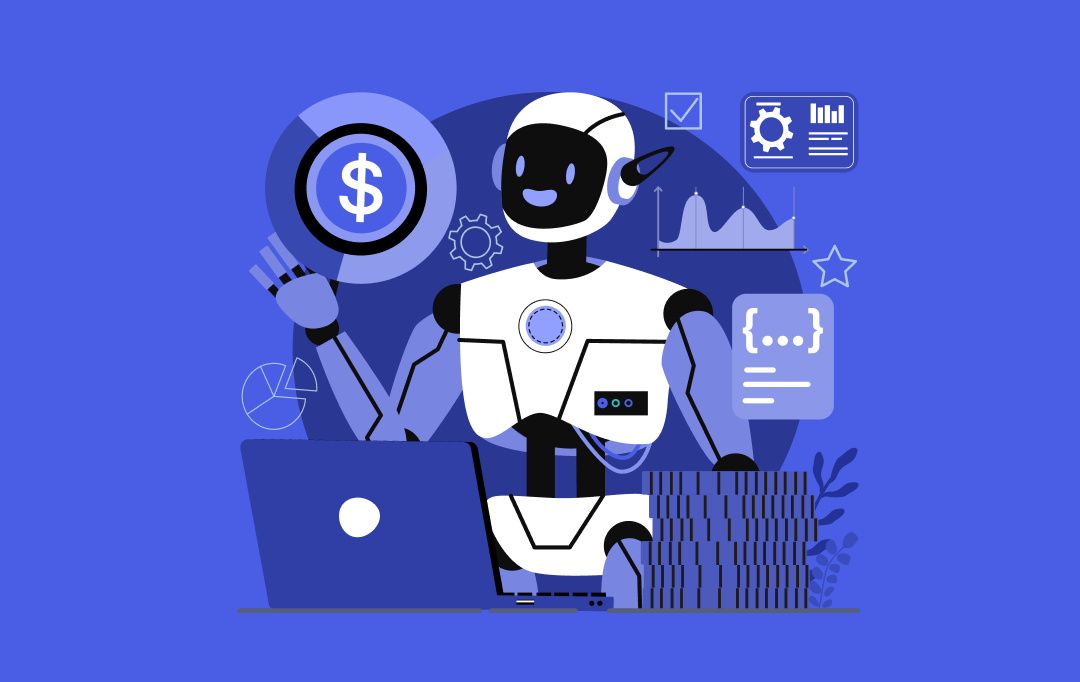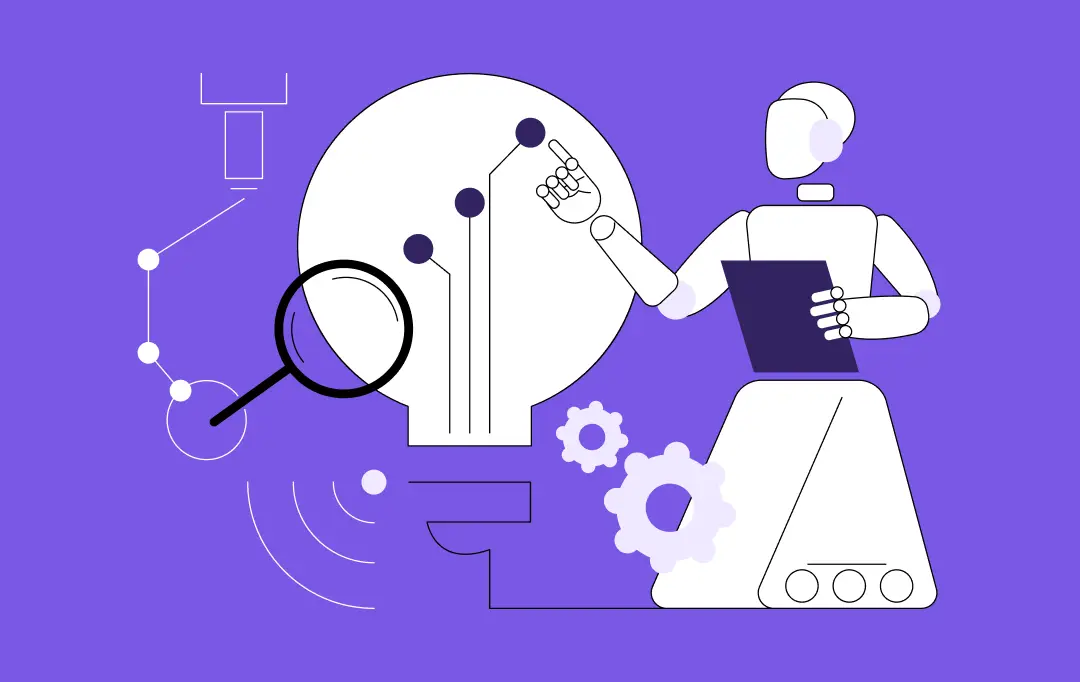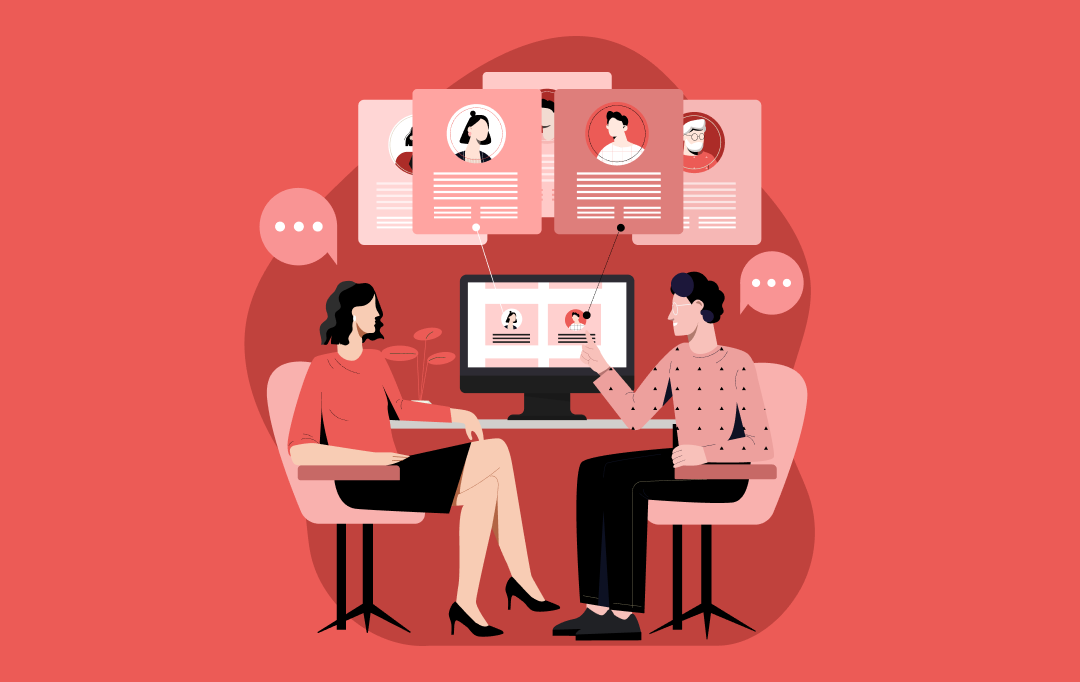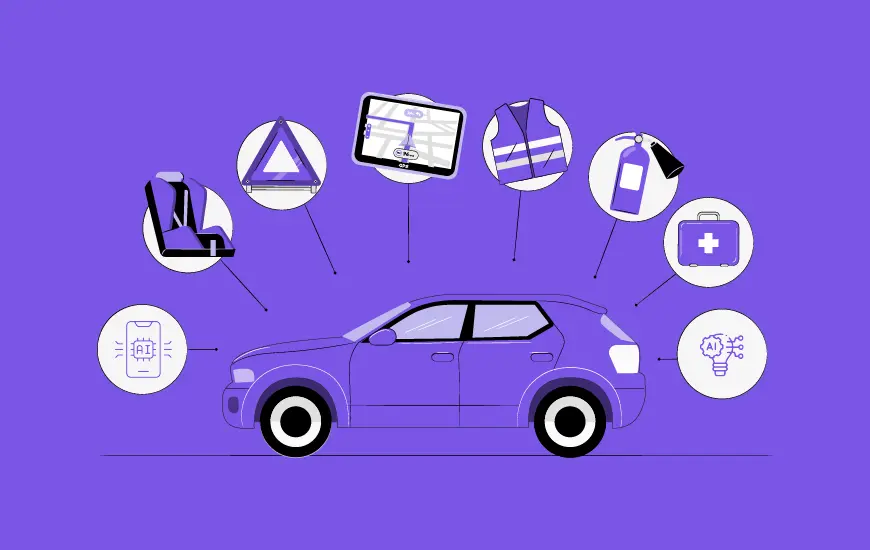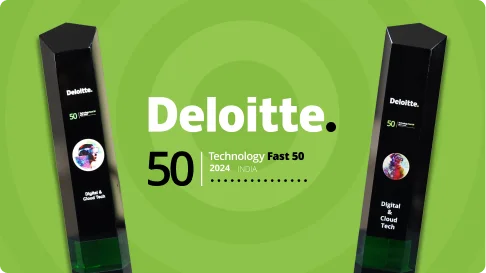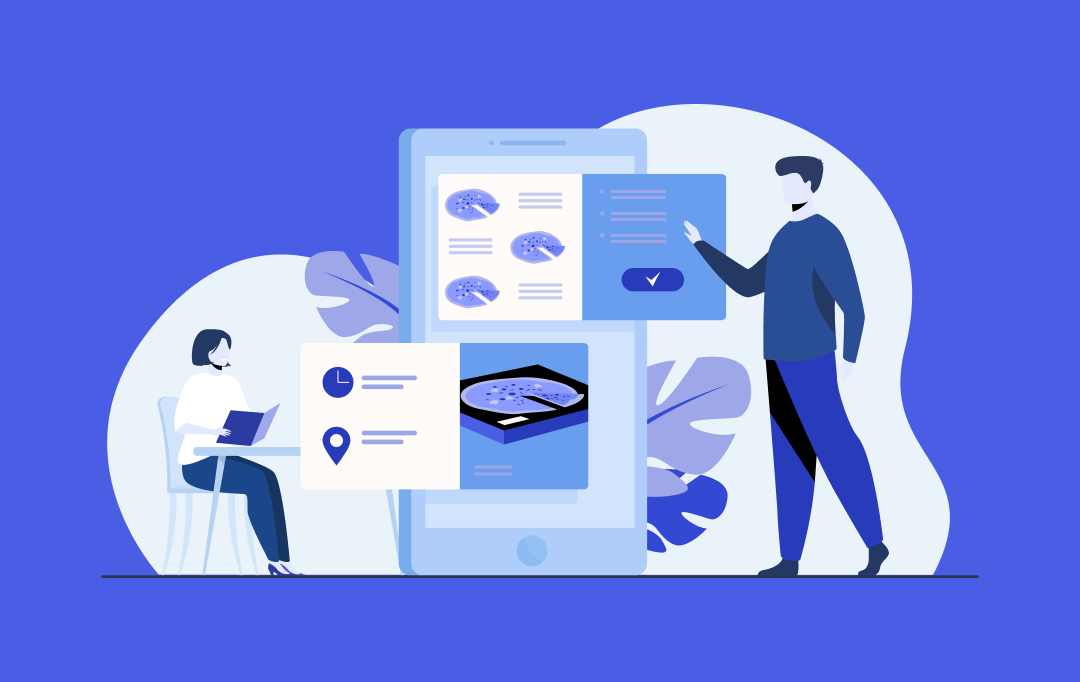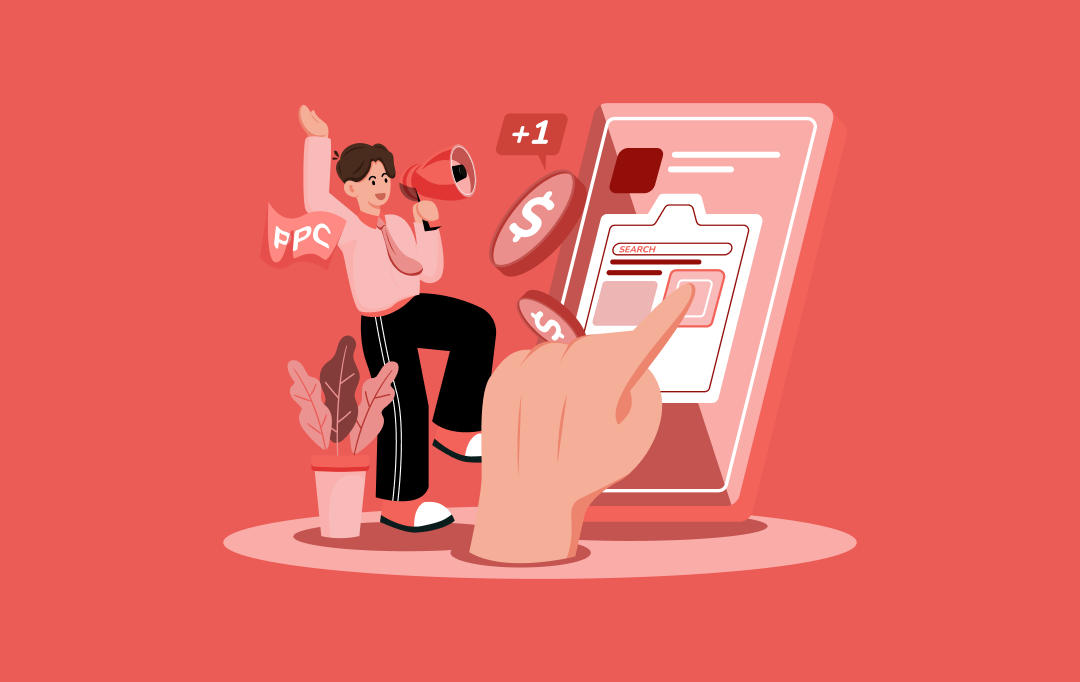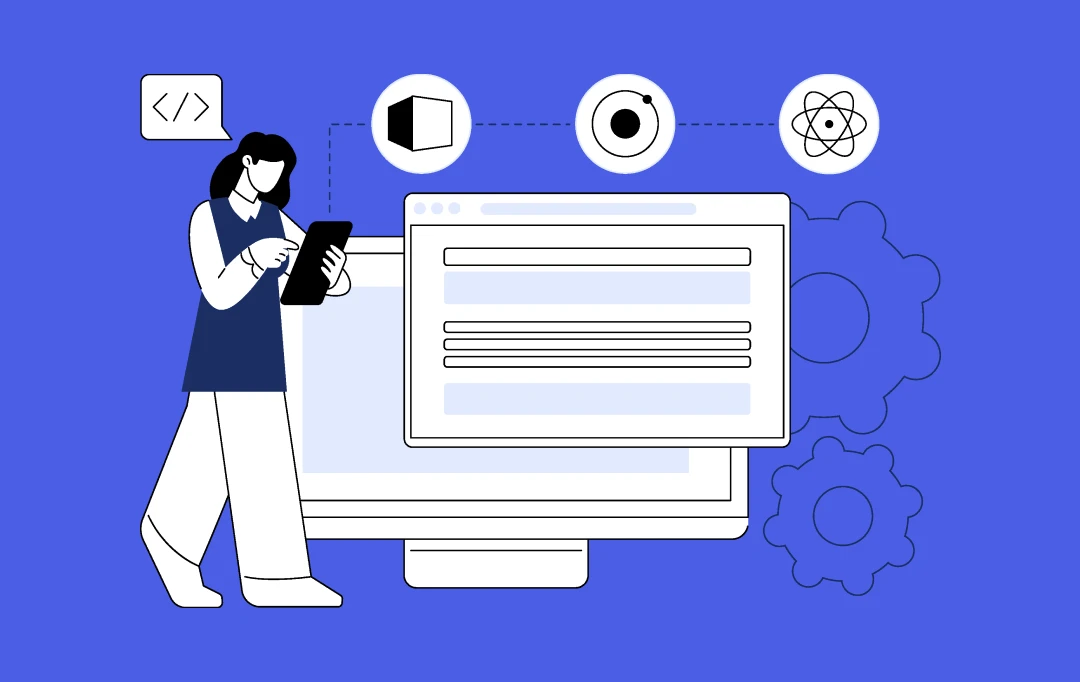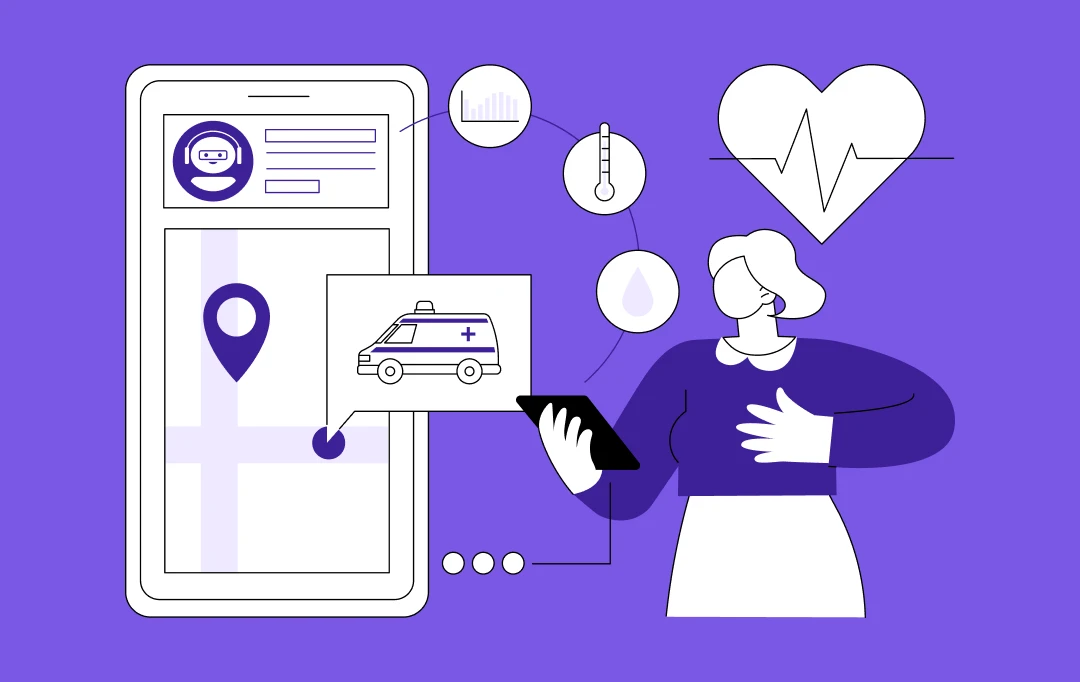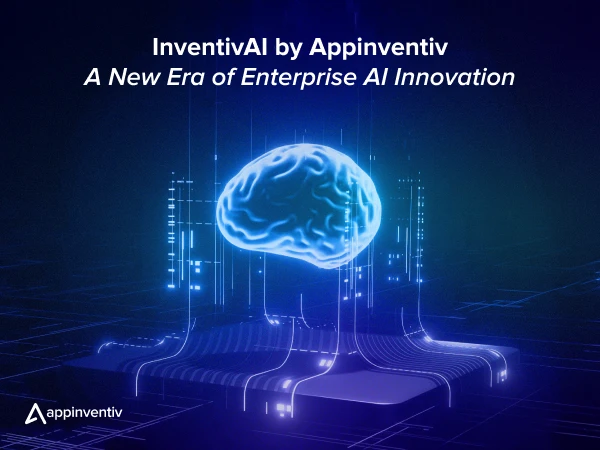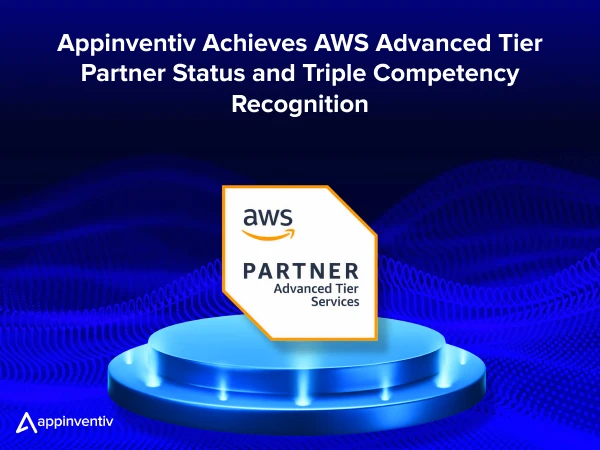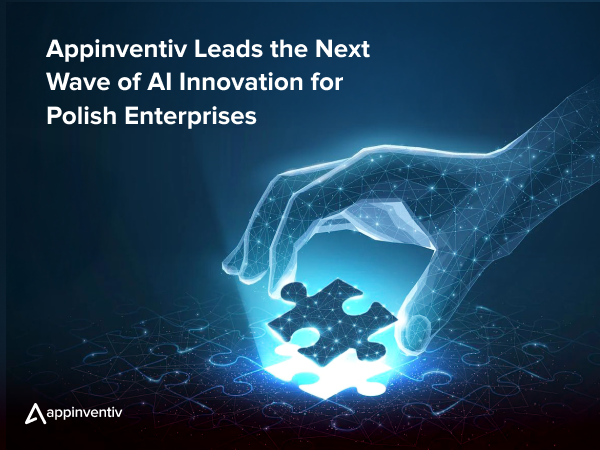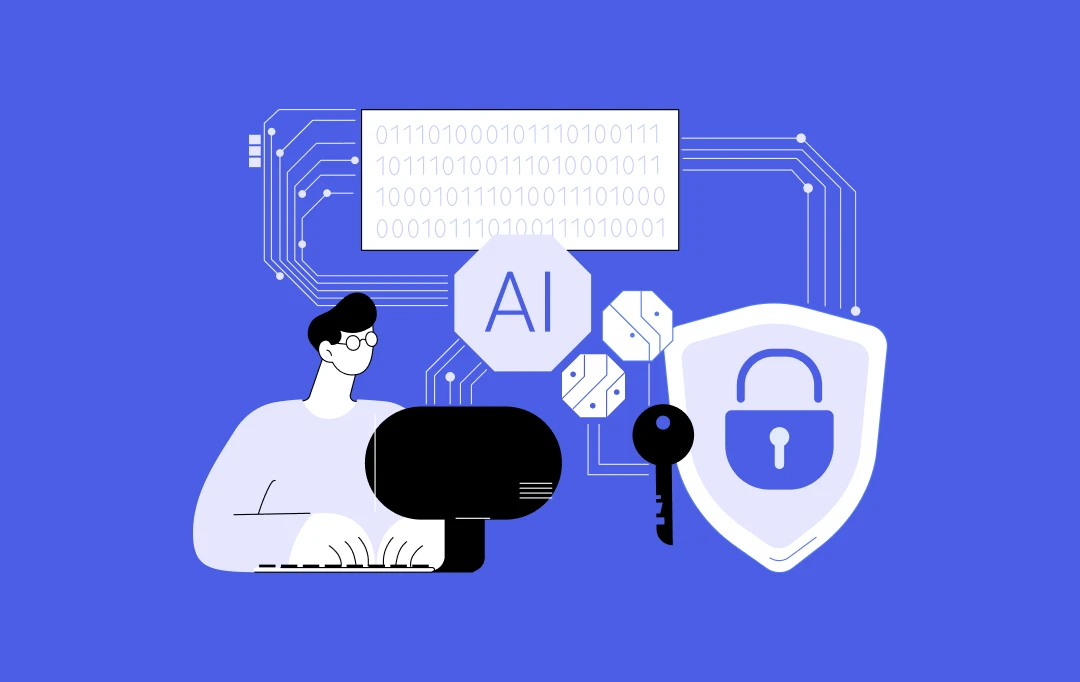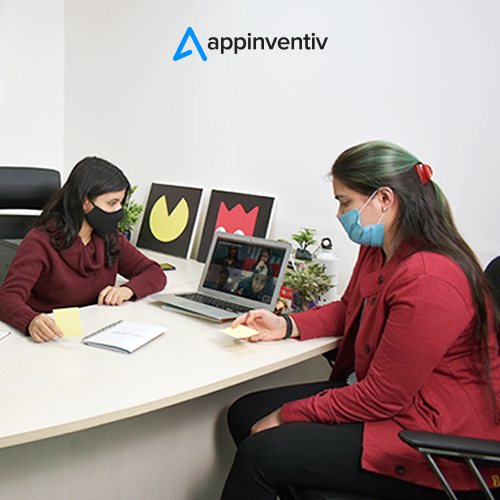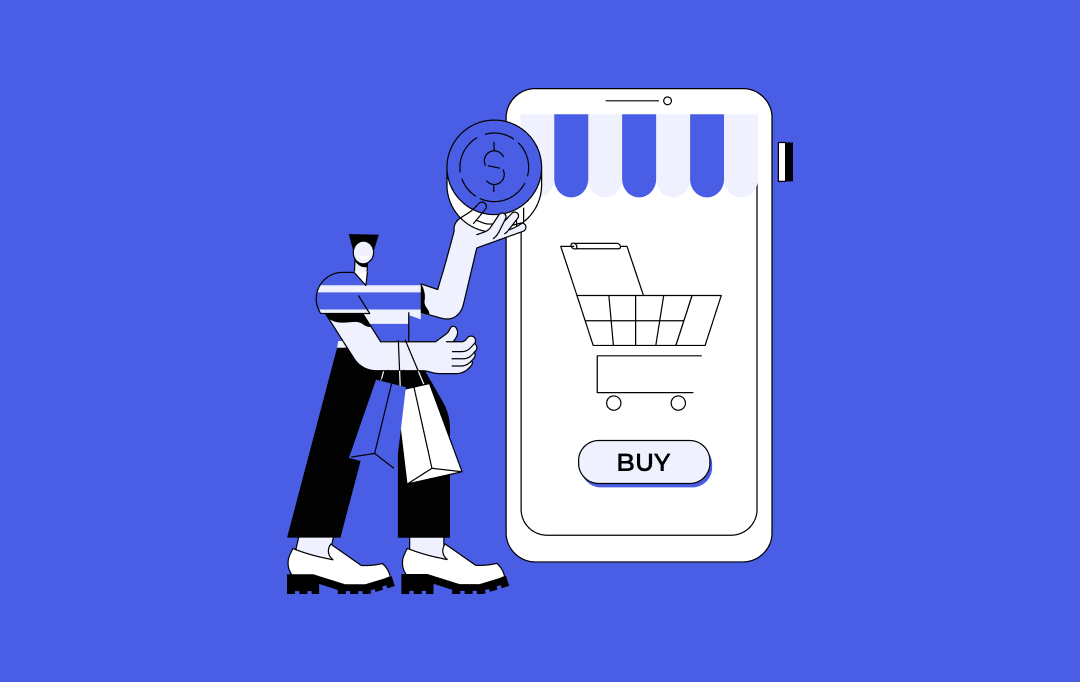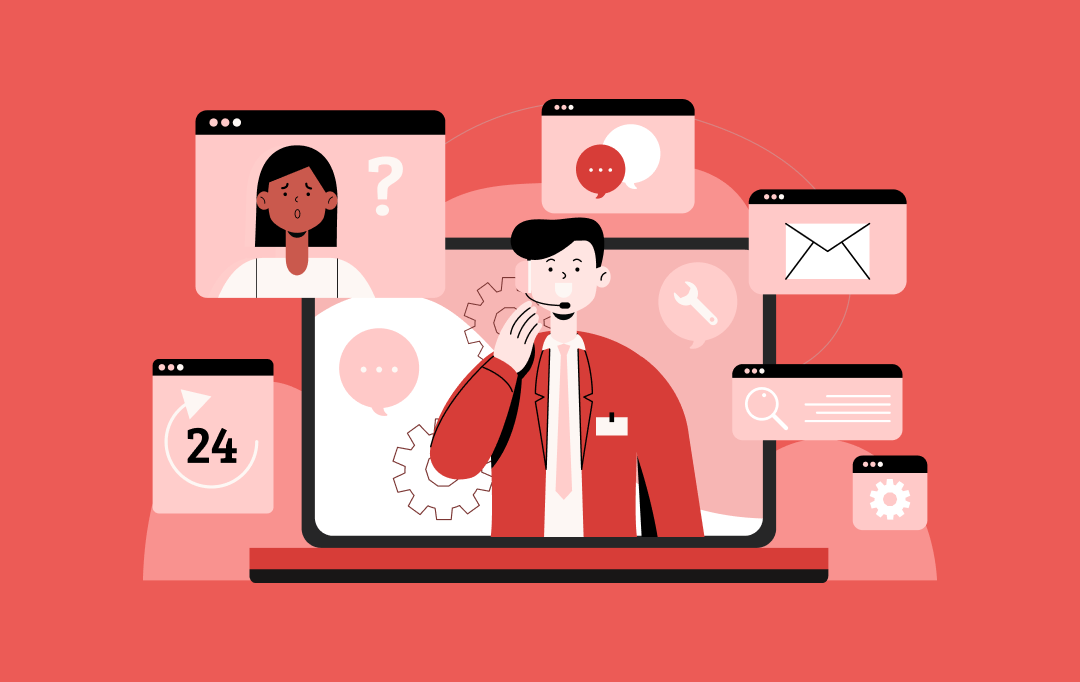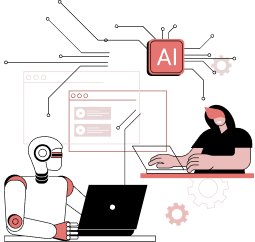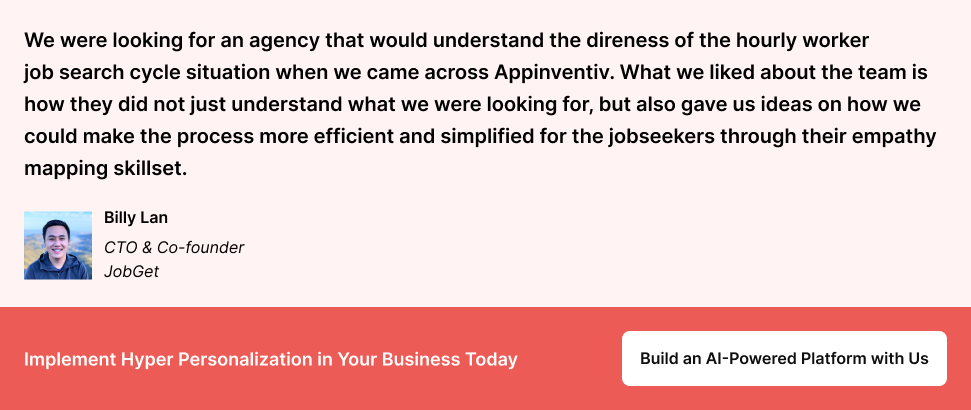- Understanding the Working Principles of Hyper-Personalization & How It Differs from Standard Personalization?
- Hyper-Personalization vs. Standard Personalization
- Key Benefits of Hyper-Personalization for Businesses
- Stronger Customer Relationships
- Better Conversion and Revenue Growth
- Improved Customer Retention
- Smarter Operations and Cost Efficiency
- Real-Time Decision-Making
- Industry-Wise Use Cases of Hyper-Personalization for Businesses
- Retail & eCommerce
- Banking & Financial Services
- Healthcare
- Travel and Hospitality
- Media and Entertainment
- Types of Hyper-Personalization Strategies & Examples
- Behavioral Personalization: Following the Breadcrumbs
- Predictive Personalization: Making Educated Guesses About the Future
- Contextual Personalization: Making It About Where and When
- Emotional Personalization: Reading the Room
- Rule-Based Personalization: Organized Decision-Making
- Synthetic Personalization: Creating Connection
- Relationship-Based Personalization: Treating Customers Like People
- Conversational AI: Delivering Personalized Interactions at Scale
- How to Implement Hyper-Personalization in Business
- Start with Data: Know Your Customer
- Use the Right Technology
- Create a Unified Customer Data Profile (CDP)
- Segment Your Audience the Right Way
- Tailor Content and Offers in Real-Time
- Prioritize Data Privacy and Ethics
- Continuously Test and Improve
- Challenges to Integrate Hyper-Personalization in Business & How to Overcome Them
- Data Privacy Concerns
- Fragmented Data
- Integrating Across Channels
- Legacy Systems and Technology Barriers
- The Future Trends of Hyper-Personalization Across Industries
- AI and Machine Learning Keep Getting Smarter
- Integration of Emerging Technologies
- Voice and Visual Search Become Standard
- Privacy-First Personalization
- How Appinventiv Can Help Your Business Implement Hyper-Personalization
- FAQs
Key takeaways:
- Hyper-personalization in business uses AI, ML, and big data to tailor experiences, helping increase customer satisfaction and engagement.
- Businesses across industries are implementing hyper-personalization strategies and witnessing impressive outcomes in terms of customer loyalty and sales.
- The future of hyper-personalization lies in predictive analytics, generative AI, and the integration of omnichannel experiences.
- To integrate hyper-personalization into business, companies must build strategies that address data privacy and management challenges.
“Hyper-personalization in business is the need of the hour.”
You might ask ‘Why’ and ‘How’? Let’s be honest. Your customers are drowning in a sea of digital noise. Every day, they receive a volley of generic emails, irrelevant ads, and one-size-fits-all offers. These basic marketing methods miss the mark completely. Today, customers expect brands to predict their needs, engage with them in real-time, and recommend products/services that feel tailored to their lives.
This is the reason that the old playbook of mass marketing is actively alienating.
The battle for attention and loyalty today isn’t won by shouting the loudest. It’s won by whispering the most relevant message, directly to an audience of one. This is where hyper-personalization for business comes in.
Hyper-personalization goes far beyond traditional methods. It counts on artificial intelligence (AI), machine learning (ML), and big data analytics to deliver experiences that resonate on an individual level.
Why does it matter? Well, a McKinsey report reveals that 71% of consumers expect personalized interactions. What’s more? 76% of cosnumers get frustrated when this doesn’t happen.
It simply means that businesses that don’t embrace hyper-personalization risk losing touch with a significant portion of their customer base. On the other hand, brands that get it right witness improved customer loyalty and higher conversion rates.
In short, the gap between personalization done well and personalization done poorly keeps widening. Industry-specific hyper personalization approaches are delivering dramatically different results compared to one-size-fits-all strategies. A retail approach doesn’t work the same way in financial services. A healthcare strategy looks completely different from what an entertainment platform needs.
Here is what we are seeing across industries: organizations that invest in hyper-personalization for businesses frameworks are outperforming their peers. They’re converting more customers. They’re keeping customers longer. They’re increasing customer lifetime value. And yes, they are also improving their margins and operational efficiency in the process.
Let’s explore the industry-specific use cases and benefits of hyper-personalization for businesses. So, without further ado, let’s get started:
Businesses using hyper-personalization see improved conversion rates. Let Appinventiv help you achieve similar results.
Understanding the Working Principles of Hyper-Personalization & How It Differs from Standard Personalization?
The term “personalization” has been thrown around for years. And you might be wondering: isn’t yper-personalization just more personalization? Not exactly. Here’s the real difference.
Traditional personalization: Traditional personalization takes a broad approach. You segment your customers into groups of 5, 10, or 20 buckets based on their demographics or behavior. Everyone in that bucket gets the same message, the same offer, the same experience. It’s personalization, sure, but it’s personalization in bulk.
Hyper-Personalization: Hyper-personalization in business works at a completely different scale. Instead of treating 10,000 customers as one group, you treat every customer as an individual.
How it works?
You extract data from multiple sources like their browsing behavior, what they’ve bought, when they buy, how they interact with your brand, and even the time of day or the device they’re using. Then, in real-time, you use AI and ML in customer personalization to deliver an experience designed specifically for that one person.
AI-driven customer personalization evaluates behavioral signals across every touchpoint such as website clicks, purchase history, customer service interactions, loyalty program activity, social media engagement and so on. Machine learning algorithms spot patterns humans would miss. These systems predict what your customers want before you fully articulate it yourself.
A practical example? Imagine a customer visiting an eCommerce site. Generic personalization might show them “Popular items” based on their product category. Hyper-personalization for businesses would analyze that specific customer’s style preferences, price point history, measurement preference and recent searches, and what’s currently in their closet (if you have that data), then show them a curated selection of items that they will love to buy.
Hyper-Personalization vs. Standard Personalization
| What We are Comparing | Old-School Personalization | Hyper-Personalization |
|---|---|---|
| How You Segment Users | Broad groups (10-50 segments) | Individual profiles (unlimited variations) |
| Data You Use | Transaction history + basic info | Real-time behavior, context, external signals |
| How Fast It Works | Batch campaigns, weekly updates | Split-second decisions during interactions |
| How It Adapts | Same template per segment | Dynamic, changes for each person |
| The Tech Stack | CRM + basic analytics | AI/ML platforms, CDPs, real-time infrastructure |
| Can It Scale? | Gets complicated as you grow | Built to handle unlimited scale |
| How You Measure It | Campaign-level reports | Individual journey tracking |
Key Benefits of Hyper-Personalization for Businesses
Hyper-personalization for businesses simply means understanding your customers so well that every interaction feels natural and connects with customers. And when you bring that level of relevance to scale, the impact on your business becomes lucrative and long-lasting. Still unsure how industry-specific hyper personalization can benefit your business? Well, let’s unpack the real-world advantages that companies are already experiencing.
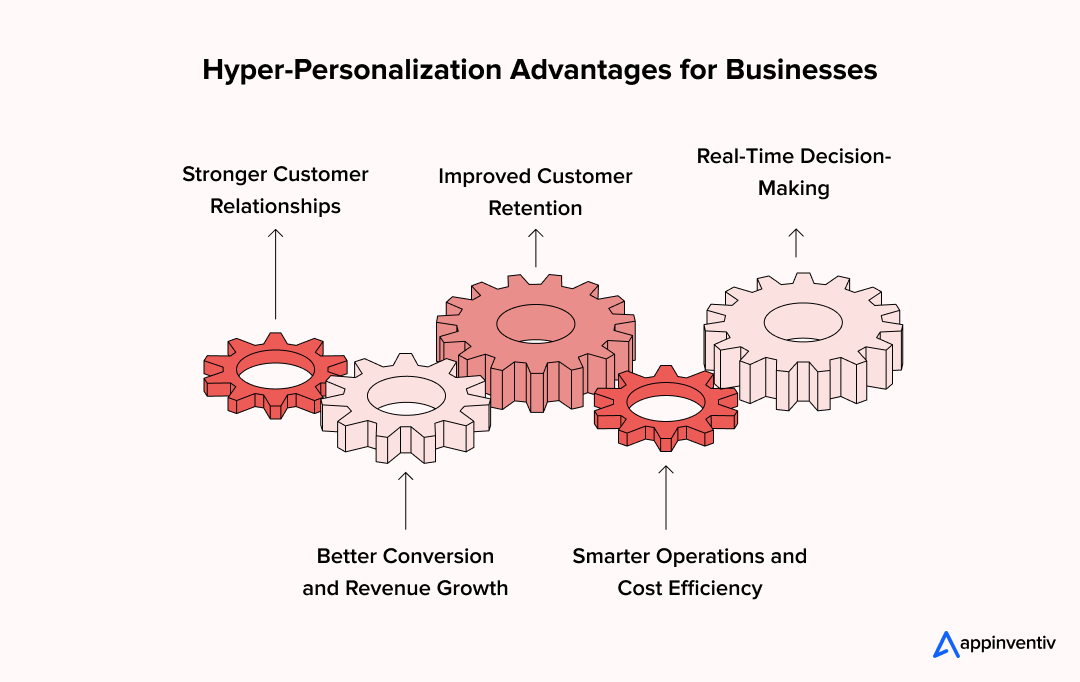
Stronger Customer Relationships
We all would have witnessed those moments when a brand seems to “get” us; whether it’s recommending the perfect product or sending a timely reminder that actually matters. That feeling isn’t accidental. It’s the result of systems trained to recognize subtle behavior patterns and respond instantly.
When customers feel understood, they stay. A recent report revealed that 80% of businesses using advanced personalization techniques report increased consumer spending. That’s the power of personalization that moves beyond marketing; it builds trust.
Better Conversion and Revenue Growth
Personalized recommendations are no longer just “nice to have.” They drive tangible business growth. According to McKinsey, brands that personalize interactions across multiple touchpoints can increase revenue by 5–15% and conversion rates by up to 40%.
The reason is simple: when your customers see only what’s relevant, their decision-making gets easier. And easier decisions mean faster sales.
Improved Customer Retention
Customer retention is something that fuels sustainable growth. Hyper-personalization helps here by reducing customer fatigue. Instead of bombarding customers with generic offers, you reach them at the right moment with right message.
For example, Sephora’s AI-driven personalization platform tailors product suggestions based on user behavior and purchase patterns. The result? Consistent rise in repeat purchases and customer lifetime value.
Smarter Operations and Cost Efficiency
While the customer experience is of utmost importance, there is an integral advantage that often goes unnoticed and i.e. efficiency. AI-driven personalization automates repetitive marketing tasks, prioritizes leads with better accuracy, and reduces resource wastage on campaigns that don’t convert.
This type of automation is of huge advantage for enterprises managing thousands of customers across different geographies. This level of efficiency can translate to millions saved annually.
Real-Time Decision-Making
The modern consumer moves fast. Their preferences change based on context: time, location, and even mood. This is where AI-driven customer personalization comes in. It empowers businesses to make decisions in real time. For instance, a retail app instantly shifts recommendations when it notices a user browsing “outdoor jackets” during a snow forecast.
Industry-Wise Use Cases of Hyper-Personalization for Businesses
Hyper-personalization is all about understanding your customers and delivering experiences that matter them the most. It has never been about just adding a customer’s name to an email. It is about making every interaction meaningful and relevant. Here is how different industries are using hyper-personalization to gain growth:
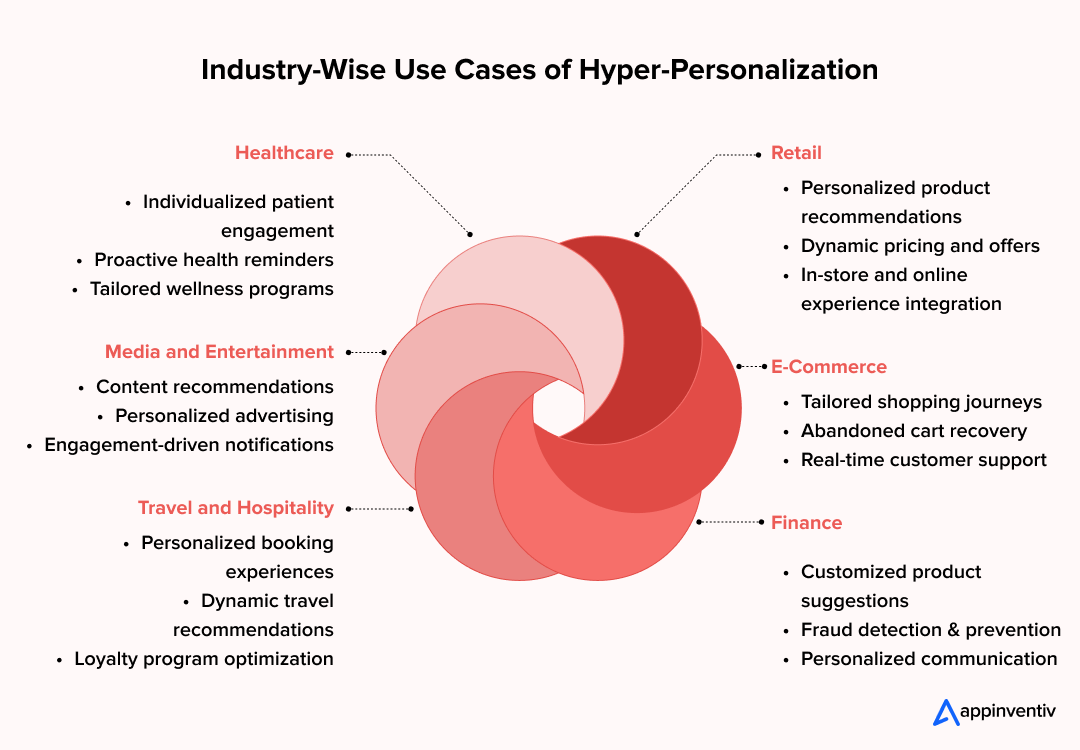
Retail & eCommerce
Hyper-personalization is transforming the way retail brands connect with customers. This helps them deliver a more relevant and seamless shopping experience.
- Dynamic Pricing and Offers
Static pricing is becoming a thing of the past. When you adjust prices based on individual customer data, behavior, and willingness to pay, revenue optimizes itself. A customer hesitating on an item gets a targeted discount. High-value customers see premium positioning. Your margin improves while customers feel treated fairly.
- Omnichannel Experience Consistency
Customers now interact with brands across multiple channels: online, in-store, or mobile. Thus, delivering a consistent, personalized experience across all touchpoints is crucial. Unified personalization means that product recommendations, promotions, and customer treatment stay consistent across platforms.
- Abandoned Cart Recovery
Cart abandonment is a common issue in e-commerce. With hyper-personalization, businesses can re-engage customers by sending reminders or offering personalized deals to encourage them to complete their purchases, reducing abandonment rates and increasing conversions.
Banking & Financial Services
Hyper-personalization in banking and finance uses data-driven insights to offer services that meet each customer’s unique financial needs.
- Customized Product Suggestions
Banks now use AI to recommend personalized products, whether it’s a loan, savings account, or credit card, based on the customer’s financial behavior and goals. This helps customers make right decisions and find the solutions they need without unnecessary complexity.
- Fraud Detection and Prevention
By tracking spending behavior, AI in banking and finance can identify suspicious activity and flag potential fraud in real-time. This gives users that their investments are safe.
- Personalized Communication
Moving away from generic messaging, financial institutions are now sending communications tailored to individual accounts. Whether it’s reminders, tips, or relevant product offers, personalized communication has become a critical part of customer engagement.
For example, we developed Mudra, a budget management platform that uses AI to deliver personalized investment insights based on users’ spending patterns.
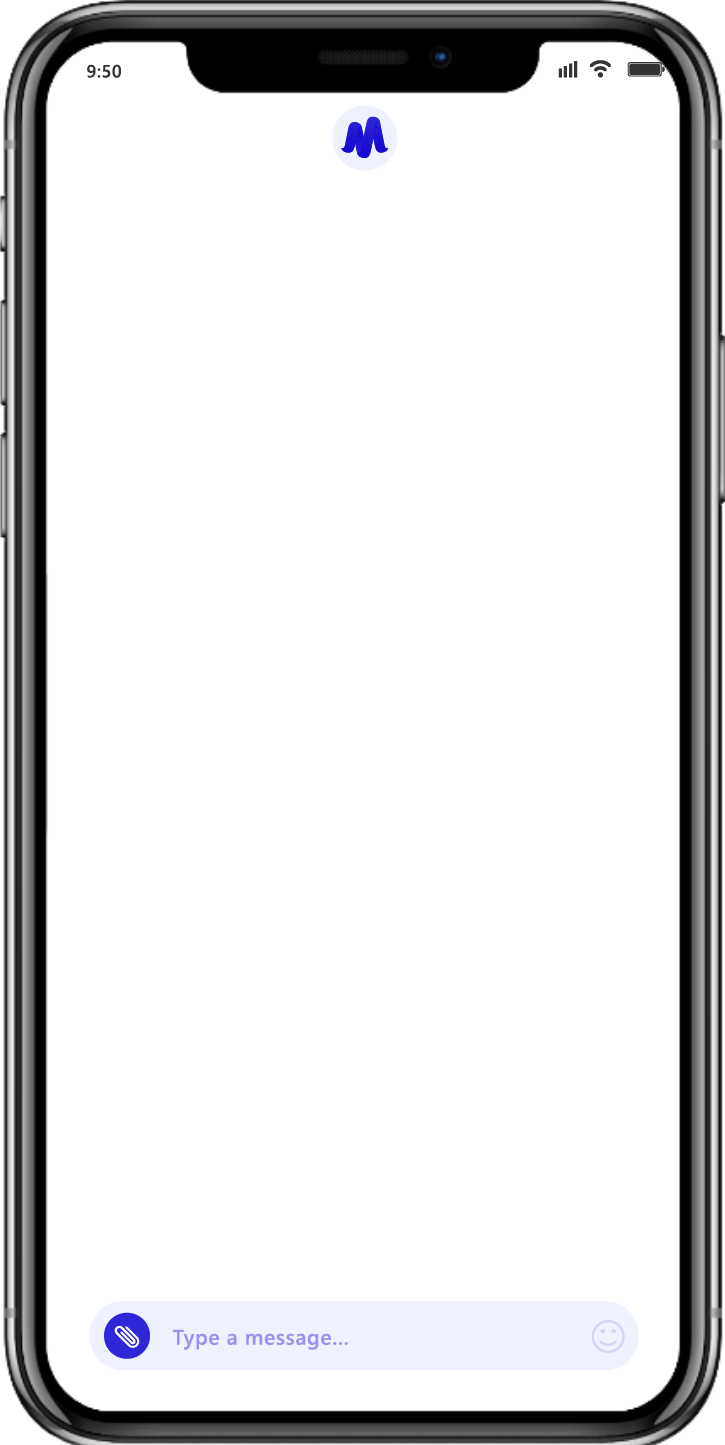
Healthcare
Hyper-personalization in healthcare is enhancing patient care. How? This hyper personalized approach gives care to patients that is individualized, timely, and more engaging.
- Individualized Patient Engagement
Healthcare providers leverage vast troves of data and create personalized treatment plans. They tailor advice and interventions based on individual medical histories and preferences. These plans are more relevant and effective, which leads to better outcomes.
- Proactive Health Reminders
Proactive reminders, such as medication notifications or scheduled check-ups, can help keep patients on track with their health goals, ensuring they stay engaged with their treatment plan.
- Tailored Wellness Programs
Healthcare is shifting focus from merely treating illness to promoting overall wellness. Personalization allows healthcare providers to offer customized wellness programs that address a patient’s specific needs, whether that’s fitness, diet, or stress management.
At Appinventiv, we developed DiabeticU, a diabetes management application. The platform uses AI to deliver personalized wellness recommendations, prescription tracking, remote doctor consultations, and meal plan customization. The results? Patients can track their health and have full control of their wellbeing.
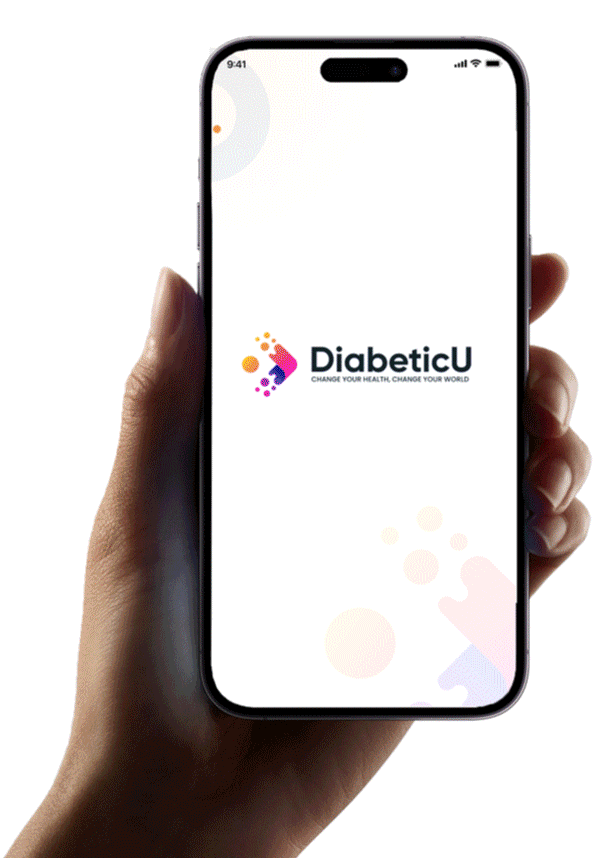
Travel and Hospitality
Hyper-personalization in travel and hospitality helps brands deliver exceptional, customized experiences, making the journey smoother and more enjoyable for customers.
- Personalized Booking Experiences
By analyzing past behavior, travel platforms and hotels can suggest destinations, accommodations, and activities tailored to the customer’s preferences. This personal touch makes booking travel both easier and more enjoyable.
- Dynamic Travel Recommendations
Based on real-time data, hyper-personalization allows travel brands to make immediate suggestions for new destinations or the best time to travel, keeping the customer experience fresh and relevant.
- Loyalty Program Optimization
With hyper-personalization, businesses can refine loyalty programs to offer benefits that are truly relevant to the customer. Instead of generic points or rewards, customers receive tailored incentives based on their specific travel habits, driving deeper loyalty.
For instance, in the Flynas airline app, we developed AI powered chatbot that offer personalized flight recommendations based on travelers’ past bookings. This helps brand create a more intuitive and tailored travel experience.
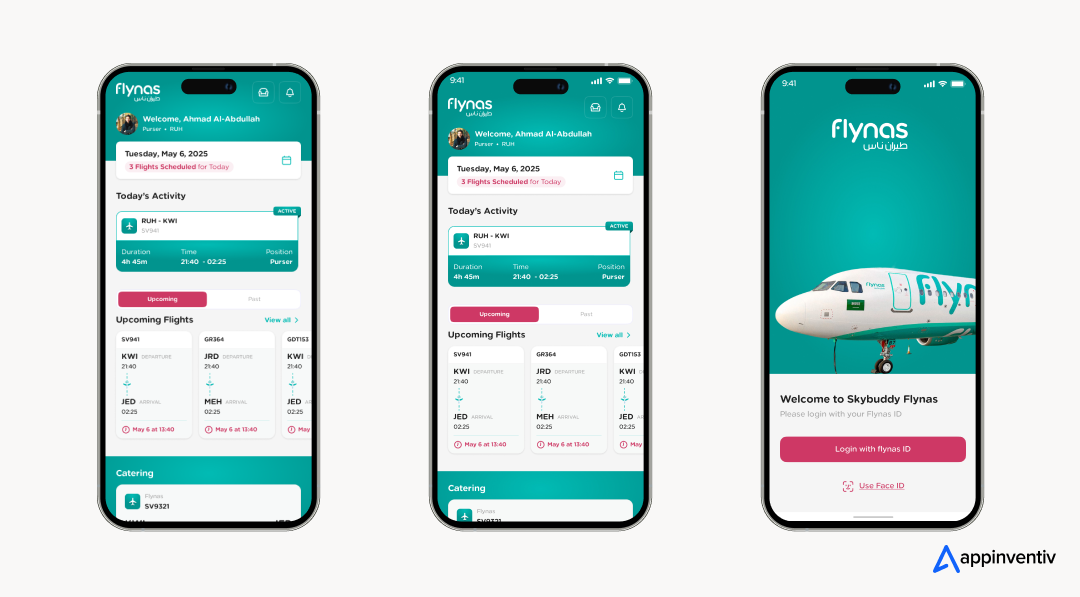
Media and Entertainment
The media and entertainment sectors have long focused on delivering engaging content, but hyper-personalization takes it a step further. This strategy ensures the content you see is exactly what you want to watch or listen to.
- Content Recommendations
Platforms like Netflix and Spotify use past behavior of their viewers to recommend movies, shows, or songs. The more personalized the content, the higher the user engagement.
- Personalized Advertising
Ads are much more effective when they align with a customer’s preferences. Hyper-personalization ensures that the ads customers see are relevant to their behavior, improving engagement and return on investment.
- Engagement-Driven Notifications
Personalized push notifications, such as alerts about new episodes of favorite shows or new music from preferred artists keep users coming back for more.
Types of Hyper-Personalization Strategies & Examples
When we talk about types of hyper-personalization strategies, we mean different ways to understand your customer and deliver something meaningful to them. Each approach works differently depending on what you’re trying to accomplish and what data you actually have access to. Below are key strategies employed across industries:
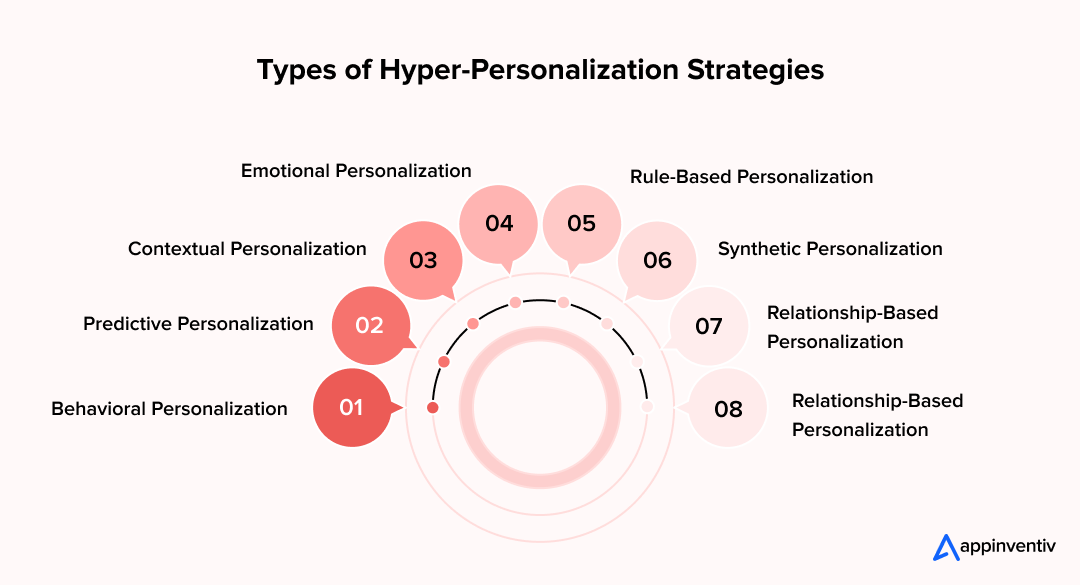
Behavioral Personalization: Following the Breadcrumbs
The simplest one to understand is behavioral personalization. You’re watching what customers do. Where they click. What they buy. How long they stay on certain pages. How they move through your site or app. You’re building a picture of their actual preferences based on their actions, not what they tell you.
Here’s why this matters. Your users don’t always know what they want or they’re not great at articulating it. But their behavior tells you everything. Someone who keeps coming back to browse jackets in neutral colors? That’s a signal. Someone who abandons your site when they see shipping costs? That’s a signal too.
An e-commerce site using this approach watches your browsing. They notice you gravitate toward minimalist design, you typically look at products in the $50-100 range, you browse on Sunday mornings, and you almost never click on sale items. That information shapes every product they show you next time.
Predictive Personalization: Making Educated Guesses About the Future
Here’s where it gets more sophisticated. Instead of just reacting to what someone’s done in the past, you try to predict what they’ll want next. You’re looking at patterns, both individual patterns and patterns across thousands of similar customers, and make an informed bet about what that person will probably engage with.
A streaming platform does this. They’re not just saying, “you watched comedies; they say, here are more comedies.” They’re analyzing your entire watch pattern. When you watch. How long you watch.
They’re seeing that you watch heavy dramas midweek but prefer lighter stuff on weekends. They’re noticing you haven’t watched anything in three days when you usually do. So they recommend something they think will pull you back in.
The accuracy improves over time because the system learns what actually worked. Did the recommendation get watched? How far did the user get? That feedback loop makes the predictions smarter.
Contextual Personalization: Making It About Where and When
Sometimes what matters most is the context the customer is in right now. Not their history. Not their preferences. Where are they? What time is it? What device are they using? What’s the weather like? Are they rushing or do they have time?
Contextual personalization pays attention to that stuff. A clothing retailer’s app knows you’re near one of their stores on a Saturday afternoon during warm weather. That’s context. They’re not going to show you winter coats. They’re showing you lightweight stuff appropriate for right now.
A restaurant app knows it’s 6 PM on a weeknight. You typically order takeout around this time. They highlight quick orders and popular items instead of elaborate tasting menus.
Emotional Personalization: Reading the Room
This one’s trickier, but it’s becoming more common. The idea is understanding not just what someone wants but how they’re feeling. Are they energized or tired? Stressed or calm? Looking for inspiration or looking for comfort?
A fitness app trying to get you to work out reads your emotional state. If you’ve been doing intense workouts three days running and your activity shows you’re slowing down, the app might suggest something lower-key instead of pushing you harder. It’s recognizing you’re probably fatigued and emotional state matters.
Rule-Based Personalization: Organized Decision-Making
Sometimes you don’t need AI to figure out personalization. You just need good rules. You segment customers into groups based on factors like their age, where they live, their purchase history, and apply clear rules about what they see.
A retailer might have a rule: “If a customer is female, aged 25-40, and has purchased athletic wear in the last 90 days, show them workout accessories.” That’s rule-based personalization. It’s predictable. It works and it’s simple to manage.
Synthetic Personalization: Creating Connection
This approach recognizes that sometimes the magic isn’t in complex algorithms. It’s in feeling personally acknowledged. You get an email that addresses you by name. It references something you’ve done on the website before. It thanks you for your previous purchase and follows up on that specific item.
You might wonder is the company running sophisticated AI on millions of data points? Not necessarily. They’re just using basic information in a personalized way. You’re not getting a generic newsletter. You’re getting something that acknowledges you specifically.
A marketing email that says “Hey John, we noticed you looked at running shoes last week” feels more personal than “Check out our latest inventory,” even though the technology behind it is fairly basic.
Relationship-Based Personalization: Treating Customers Like People
The last approach is about building actual relationship language into how the brand communicates. They use conversational, friendly language. They acknowledge your loyalty. They treat you like someone they know rather than a transaction.
A skincare company does this when its ads and emails don’t sound corporate. They sound like a friend giving advice. “We know you have sensitive skin based on what you’ve told us. Here’s what we’d genuinely recommend.” It’s warm without being fake. It creates a feeling of connection.
The key difference from synthetic personalization is this it isn’t just about using your name. It’s about the entire tone and approach, feeling like a genuine relationship.
Conversational AI: Delivering Personalized Interactions at Scale
Conversational AI, such as chatbots and virtual assistants, takes hyper-personalization to the next level by offering real-time, context-aware support. These AI agents remember past conversations, understand user intent, and proactively provide tailored recommendations or assistance, much like a knowledgeable human rep.
For example, a banking chatbot can greet returning customers by name, recall their recent transactions, and offer relevant financial advice. In retail, AI-powered assistants can guide shoppers through product selection based on their unique preferences and purchase history, making every interaction feel seamless and personal.
The result? Faster support, higher engagement, and a customer experience that feels truly one-to-one.
Each of these hyper-personalization examples by industry can be mixed together. The strategy you lean on most heavily depends on what you’re selling, what data you have access to, and what actually matters to your customers in your specific context.
How to Implement Hyper-Personalization in Business
Implementing hyper-personalization in business is not just about using the latest tech; it’s about connecting with your customers in a way that feels natural and meaningful. It requires a smart, well-thought-out approach. If you are not sure how to do it right that can yield real results, here are the steps you can take to make it happen.
Start with Data: Know Your Customer
Data is the real asset for hyper enterprise hyper-personalization strategy. Why? You need to understand your customer. And that means analyzing tons of data. However, it’s not just about gathering everything you find. It’s about getting the right data. Here’s what you’ll need:
- Behavioral Data: What are they browsing? What’s in their cart? What are they searching for?
- Transactional Data: What have they bought? When did they make their last purchase?
- Demographic Data: What are they? Their age, location, job title?
- Psychographic Data: What are their interests? What do they value?
The key isn’t collecting everything. It’s getting the right information. Once you have this picture, real patterns emerge that make personalization possible.
Use the Right Technology
You can’t do real-time personalization with basic systems. Here’s where AI tech stack and machine learning come into play. Machine learning and AI analyze massive customer data patterns fast. They help
- Predict what someone wants next.
- Enable real-time decisions.
- Analyze vast amounts of customer data in real time
- Segment your audience more accurately
- Predict future behavior and offer personalized experiences
Create a Unified Customer Data Profile (CDP)
Your customers don’t just interact with you through one channel. Your customers interact across channels. They browse on mobile, research online, buy in-store. To truly integrate hyper-personalization, see the complete journey. One unified profile shows their browsing history, purchases, customer service interactions, what promotions converted them, communication preferences, everything together.
This changes everything. You’re making informed decisions on complete information, not assumptions.
Segment Your Audience the Right Way
While hyper-personalization is about individual experiences, we can’t overlook the importance of segmentation. The beauty of personalization at scale for enterprises is in targeted segmentation. By categorizing your customers based on shared behaviors, interests, and needs, you can ensure you’re giving the right message to the right person.
For example:
- Behavioral Segmentation: Group customers based on how frequently they engage with your brand
- Value-Based Segmentation: Recognize your high-value customers who spend the most, and treat them accordingly with exclusive offers.
- Engagement Segmentation: Track how engaged your customers are. More active users may get advanced offers, while others may need more nurturing.
Tailor Content and Offers in Real-Time
Customers expect personalization in real time. That means when a customer interacts with your brand, they expect the content and offers to adjust immediately, based on their behavior.
Someone browses winter boots? Show related products when they return. Someone spent time on a specific service? Highlight related options next visit. Someone abandoned their cart? Acknowledge it within hours.
Real-time means responsive. It means recent actions inform what they see next.
Prioritize Data Privacy and Ethics
Data breaches are the worst nightmare for anyone. According to Statista, around 94 million data records were leaked in the second quarter of 2025, nearly 94 million data records were leaked in data breaches. This impacted millions of individuals worldwide.
So, with data breaches are on the constant rise, it is integral for you to be transparent about what you collect and why. Get genuine consent. Secure data seriously; a breach destroys trust. Respect boundaries too. One relevant recommendation feels helpful. Five notifications feel like harassment.
Continuously Test and Improve
Implementing hyper-personalization in your business isn’t one-time work. Run A/B tests. Try different approaches with different groups. Listen to customer feedback. Measure real impact: conversion rates, customer lifetime value, satisfaction scores, retention.
Companies nailing enterprise hyper-personalization strategy constantly tweak and test. They abandon what doesn’t work. That’s how you make this actually work at scale.
Challenges to Integrate Hyper-Personalization in Business & How to Overcome Them
While the benefits of hyper-personalization are numerous, we can’t overlook its challenges. Here are some key obstacles businesses often encounter and strategies to overcome them:
Data Privacy Concerns
Handling customer data responsibly is crucial. Hyper-personalization involves collecting a lot of personal data. So, protecting these data and complying with data privacy regulations like GDPR and CCPA is essential.
Solution:
- Be crystal clear with customers about how you will collect and use their data.
- Give your customers the easy options to opt-out in case they don’t want their data used for personalization.
Fragmented Data
One of the biggest challenges in hyper-personalization is fragmented data. Information stored in separate systems that don’t communicate with each other. These data silos prevent you from seeing a complete picture of your customer.
Solution:
- Create a CDP that consolidates data from every channel into a single, unified profile.
- Build custom AI models that can help process and analyze data more effectively
Integrating Across Channels
Customers expect a seamless experience, no matter where they engage with your brand. Whether it’s online, in-store, or through mobile apps, integration across channels is key.
Solution:
Make sure your technology connects everything, so your personalization strategy works consistently across all customer touchpoints.
- Ensure your systems communicate efficiently, allowing real-time data sharing and updates across all platforms.
- Implement real-time data synchronization between all platforms to maintain consistency.
Legacy Systems and Technology Barriers
Many businesses are hindered by outdated systems that are incompatible with modern personalization technologies. Legacy infrastructure can make it difficult to integrate new tools and processes for hyper-personalization.
Solution:
- Gradually upgrade or replace legacy systems with modern, flexible platforms that can easily integrate with AI and machine learning tools.
- Consider cloud-based solutions that allow for scalability and flexibility, ensuring future-proofing for your business.
The Future Trends of Hyper-Personalization Across Industries
As we look to the future, it’s clear that hyper-personalization is only going to become more integral to how businesses engage with their customers. The technology driving it is evolving rapidly, and businesses that keep pace with these tech trends will gain significant advantages. Let’s take a look at what’s on the horizon.
AI and Machine Learning Keep Getting Smarter
AI and ML already power personalization. But they are poised to get significantly better. Systems will predict customer behavior with accuracy that seems uncanny. Real-time insights will become instantaneous. What changes?
Deeper Insights: You’ll stop seeing what customers want. You’ll understand why they want it. That’s the difference between okay personalization and exceptional personalization. Understanding motivation means your recommendations hit differently.
Predictive Personalization: Predictive capability shifts from reactive to anticipatory. Right now, you’re responding to actions customers have taken. Soon, you will offer exactly what they need before they realize they need it. That’s powerful.
Integration of Emerging Technologies
Alongside AI, other emerging technologies like 5G, Internet of Things (IoT), Gen AI and augmented reality (AR) will reshape hyper-personalization.
- 5G and Real-Time Data: 5G changes speed fundamentally. Data collection and processing will happen instantly instead of in batches. Your personalization responds in real-time rather than delayed.
- Generative AI: Generative AI in business is opening possibilities that didn’t exist before. Instead of selecting from predefined recommendations, systems could actually generate unique content for each person. That’s not quite here yet, but it’s coming.
- IoT and Smart Devices: Imagine walking into a store and your phone automatically receiving personalized product recommendations based on your previous visits or interactions with the brand. This is where IoT-powered hyper-personalization will take us.
- AR for Immersive Shopping: The retail industry is already experimenting with augmented reality to allow customers to try on products virtually. This kind of technology will make shopping more personalized, engaging, and convenient, all from the comfort of your home.
Voice and Visual Search Become Standard
The future of search is visual and voice-driven. We’re already seeing the rise of voice search and visual search but these technologies will become the new norm in the coming years. Voice assistants and visual search are becoming how users actually find things. Businesses ignoring this miss a significant interaction channel.
Voice search allows customers to ask questions naturally. Visual search works differently. Customer sees something they like, takes a photo, and searches for similar items.
When combined with personalization, results reflect their demonstrated preferences, past purchases, and budget patterns. It’s discovery powered by their actual interests.
Privacy-First Personalization
This is where many businesses get it wrong. They think privacy and personalization conflict. They don’t. They’re complementary when executed correctly.
Customers want personalization. They also want control over their data. Businesses that give them both win. Transparency about what data you collect, why you collect it, and how you use it builds trust. So, in future, customers will have more control over the data they share. That control becomes a competitive advantage because customers willingly share more with brands they trust.
Your data infrastructure will need real security. Not adequate security; exceptional security. Breaches destroy personalization trust immediately. If customers think you’ll lose their data, no amount of personalized recommendations brings them back.
The future isn’t less data. It’s smarter data combined with genuine respect for privacy.
How Appinventiv Can Help Your Business Implement Hyper-Personalization
Implementing a world-class enterprise hyper-personalization strategy is complex. It requires a rare blend of strategic vision, deep data analytic capabilities and AI development expertise. That’s where we come in.
At Appinventiv, our team of 1600+ tech experts doesn’t just build software; they architect the data-driven ecosystems that power next-generation customer experiences. With over 200+ data scientists & AI engineers onboard, we specialize in delivering secure AI services & solutions that scale with your needs.
Our Credentials Speak for Themselves:
- Proven Expertise: We have successfully delivered over 300+ advanced AI & ML projects and trained 150+ custom AI models for a global clientele.
- Industry Recognition: Deloitte has consistently recognized Appinventiv for fast tech and exponential growth in 2024 and 2025. We have also been ranked among APAC’s High-Growth Companies (by Statista & FT) for Two Consecutive Years. ET has named as a leader in AI Product Engineering & Digital Transformation.
- Measurable Results: Our clients typically see 98% AI prediction accuracy, 10x faster time-to-market and 40% average reduction in costs within the first year of implementing our custom-built solutions.
- Proven Track Record: In our 10+ years of experience in AI and ML, we have helped numerous companies in different industries leverage the power of AI automation and personalization. Vyrb, Mudra, JobGet, Flynas, and MyExec are just a few of our proven AI projects.
Want AI consultation to build right data strategy? Wishing to build a custom AI model? Looking to upgrade your legacy systems with AI? No matter what your project vision is, our end-to-end AI services can help you implement hyper-personalization in your business.
Partner with us today and unlock new levels of customer loyalty and drive unprecedented growth.
FAQs
Q. What is hyper-personalization in business?
A. Hyper personalization in business means using advanced technologies like AI and real-time data to treat every customer like an individual.
It moves way beyond broad segments (like “moms in the Midwest”) to create unique, 1:1 experiences that anticipate what a specific customer needs in a specific moment.
Q. How can hyper-personalization improve business performance?
A. It’s a direct driver of your most important metrics. By being incredibly relevant, you increase engagement, which leads directly to higher conversion rates and larger order values. More importantly, it builds deep, sticky loyalty, which reduces customer churn and dramatically increases long-term customer value (CLV).
Q. Why is hyper-personalization important for modern enterprises?
A. Hyper-personalization is important for modern enterprises because customer expectations have fundamentally changed. They are tired of generic, one-size-fits-all marketing. Now, they expect brands to understand their individual needs and respect their time.
If you can’t deliver that personal touch, your customers will find a competitor who can. It’s become a matter of survival and growth.
Q. What technologies enable hyper-personalization (AI, ML, CDPs, analytics)?
A. Technologies that enable hyper-personalization are more likely a four-part engine.
- A Customer Data Platform (CDP) is the fuel tank; it unifies all your customer data in one place.
- Advanced analytics is the diagnostic system, telling you what the data means.
- AI and Machine Learning (ML) are the brains, making predictions.
- Marketing automation tools are the wheels, delivering the personalized experience to the customer on the right channel.
Q. What industries benefit most from hyper-personalization?
A. Honestly, any business with a direct relationship with its customers can benefit massively. However, industries that can benefit the most from hyper-personalization are:
- Retail
- eCommerce
- FinTech
- Media & entertainment
- Healthcare
- Education
Q. How can data privacy be maintained with hyper-personalization?
A. The key to maintain data privacy through hyper personalization lies in a transparent value exchange. You must be crystal clear with customers about what data you’re collecting and how you’re using it to make their experience better.
Give them easy-to-use controls over their data and always adhere strictly to regulations like GDPR. Trust is earned when customers feel they are in control and are getting real, tangible value in return.


- In just 2 mins you will get a response
- Your idea is 100% protected by our Non Disclosure Agreement.
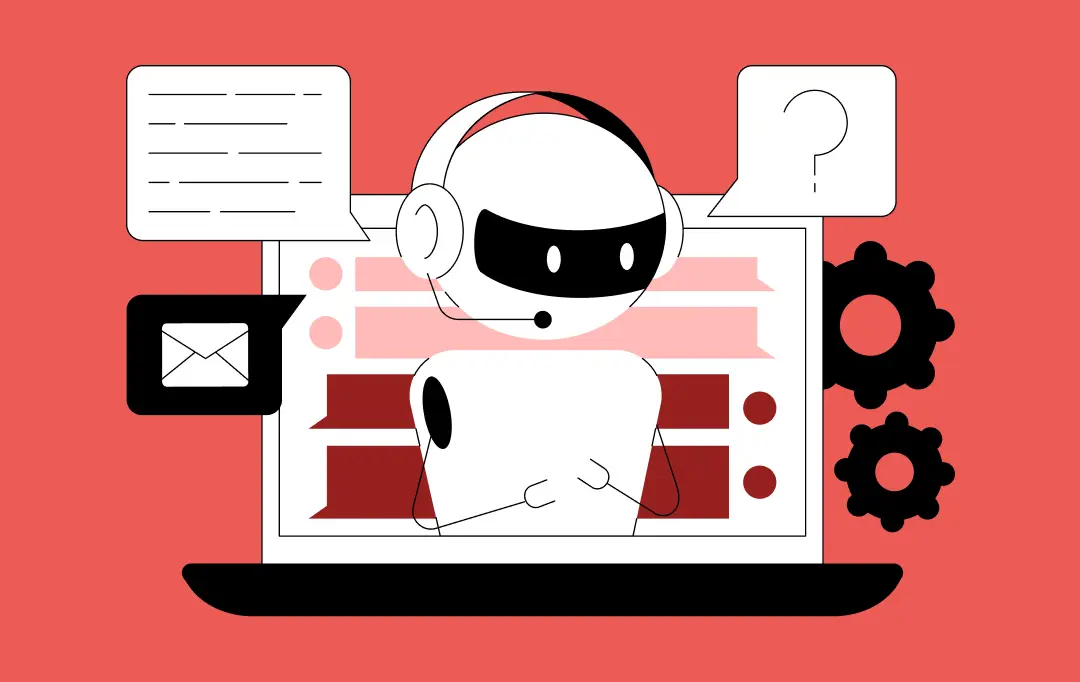
How to Build a Custom Multilingual Chatbot? Features, Process, Costs
Key takeaways: Multilingual Chatbots Drive Revenue Growth: Companies see higher conversion rates when customers can interact in their native language, with nearly 75% of global customers preferring to buy from websites in their preferred language. Beyond Translation to Cultural Intelligence: Successful implementations require cultural adaptation, not just language translation. Systems must understand context, emotion, and…
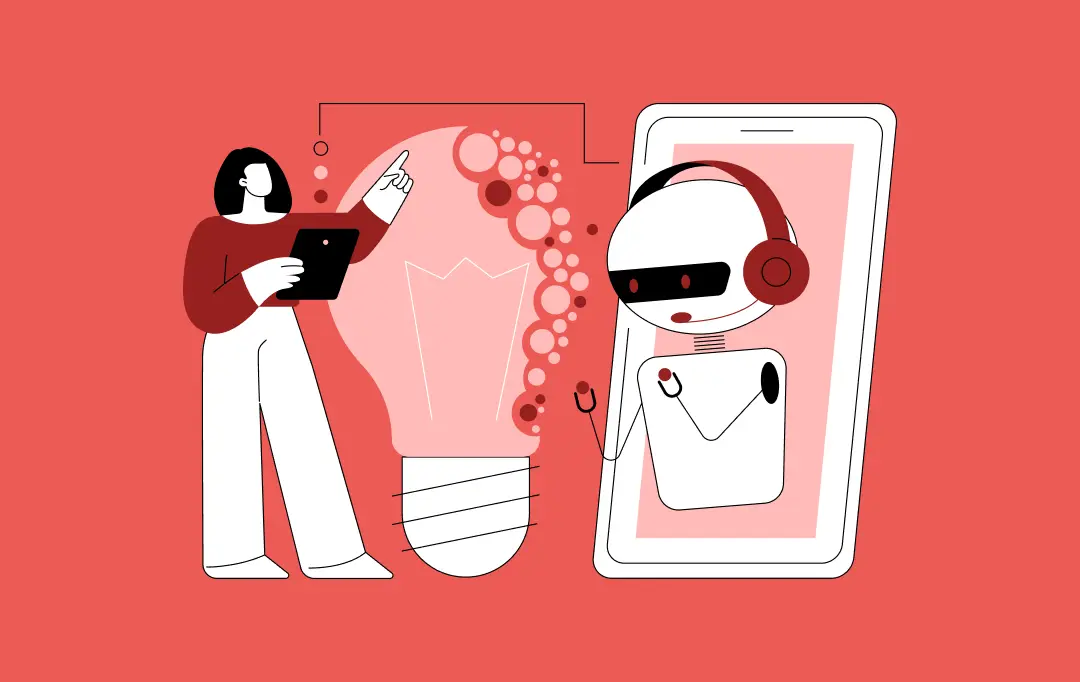
How Much Does It Cost to Build an AI App in Dubai?
Key takeaways: AI app costs in Dubai typically range from AED 80,000 for simple builds to AED 800,000+ for enterprise systems. Dubai is past AI experimentation, and not investing now means catching up later at higher cost. The real budget is driven by data, integrations, architecture, and compliance, not just app features. Hidden costs like…

How AI Tokenization is Enabling Secure and Transparent Asset Ownership in 2026
By 2026, AI tokenization has moved beyond early-stage experiments and pilot projects. Tokenizing real-world assets has become a serious commercial strategy for financial institutions, supply chain operators and technology-driven enterprises. A 2025 report by the World Economic Forum in collaboration with Accenture highlights tokenization as a key mechanism for value exchange in modern financial markets.…
